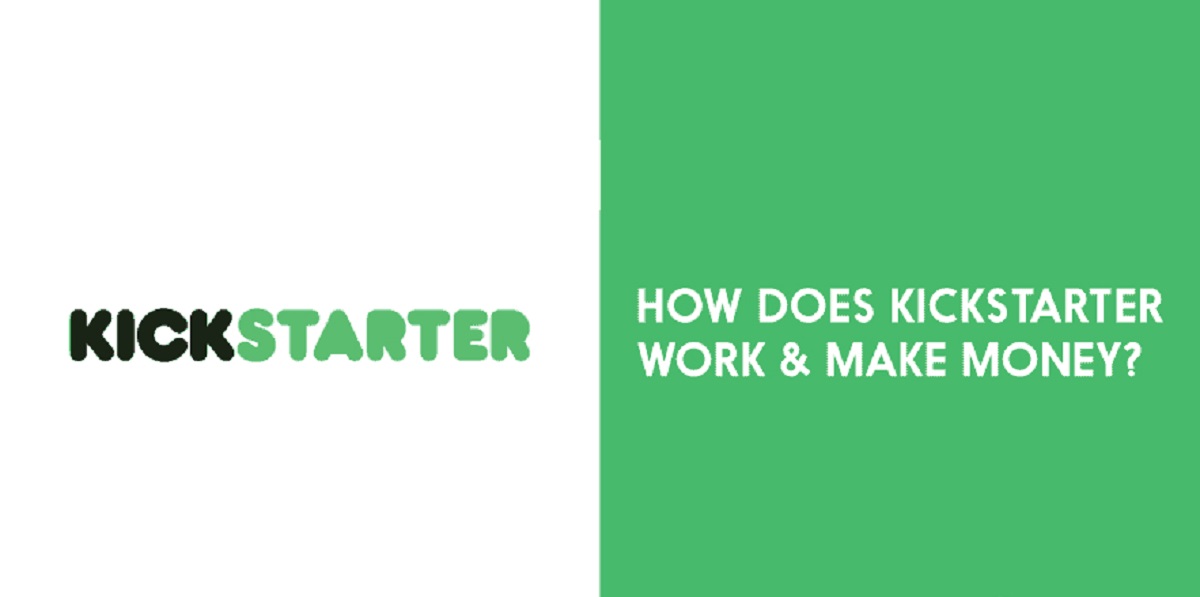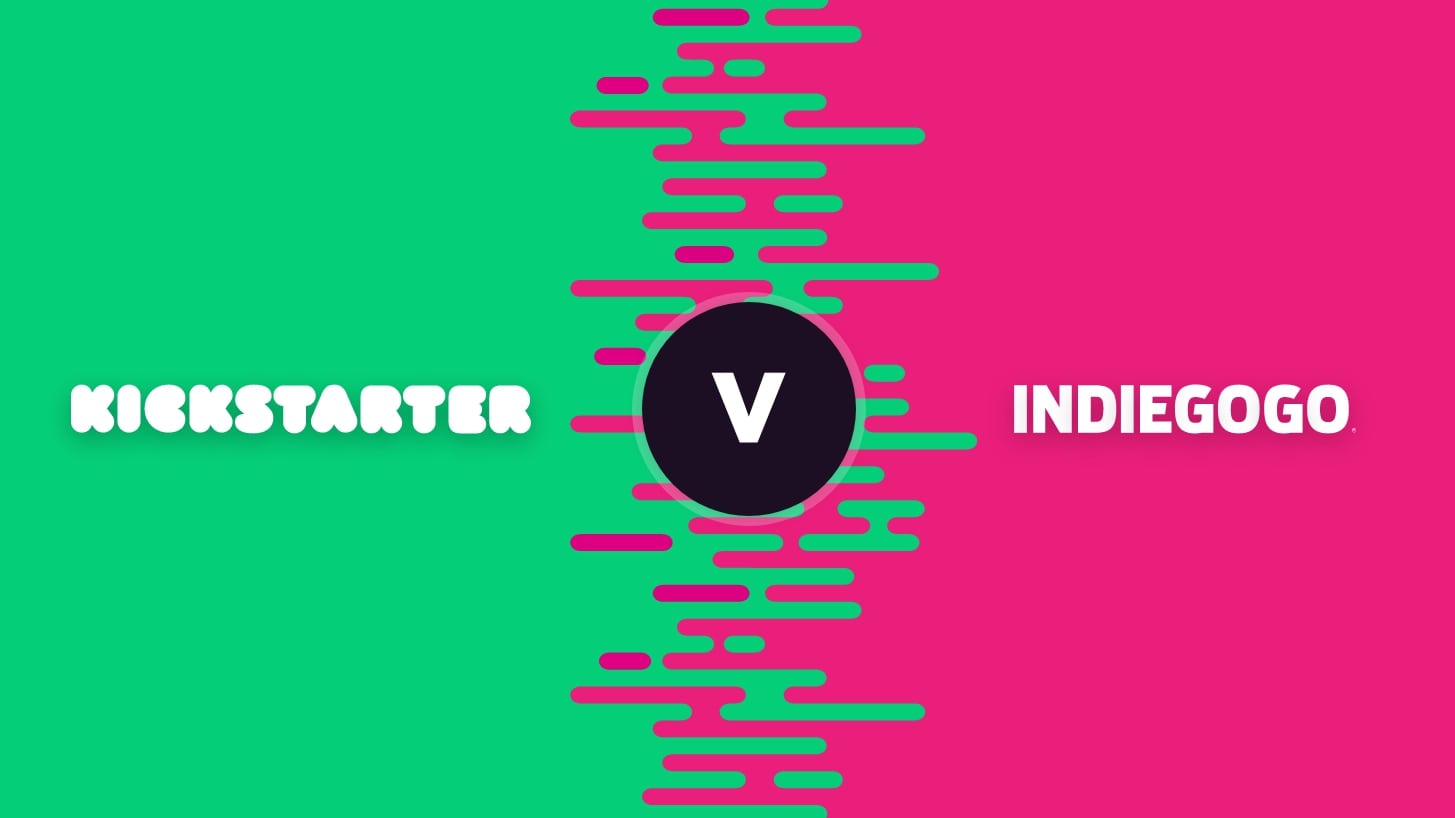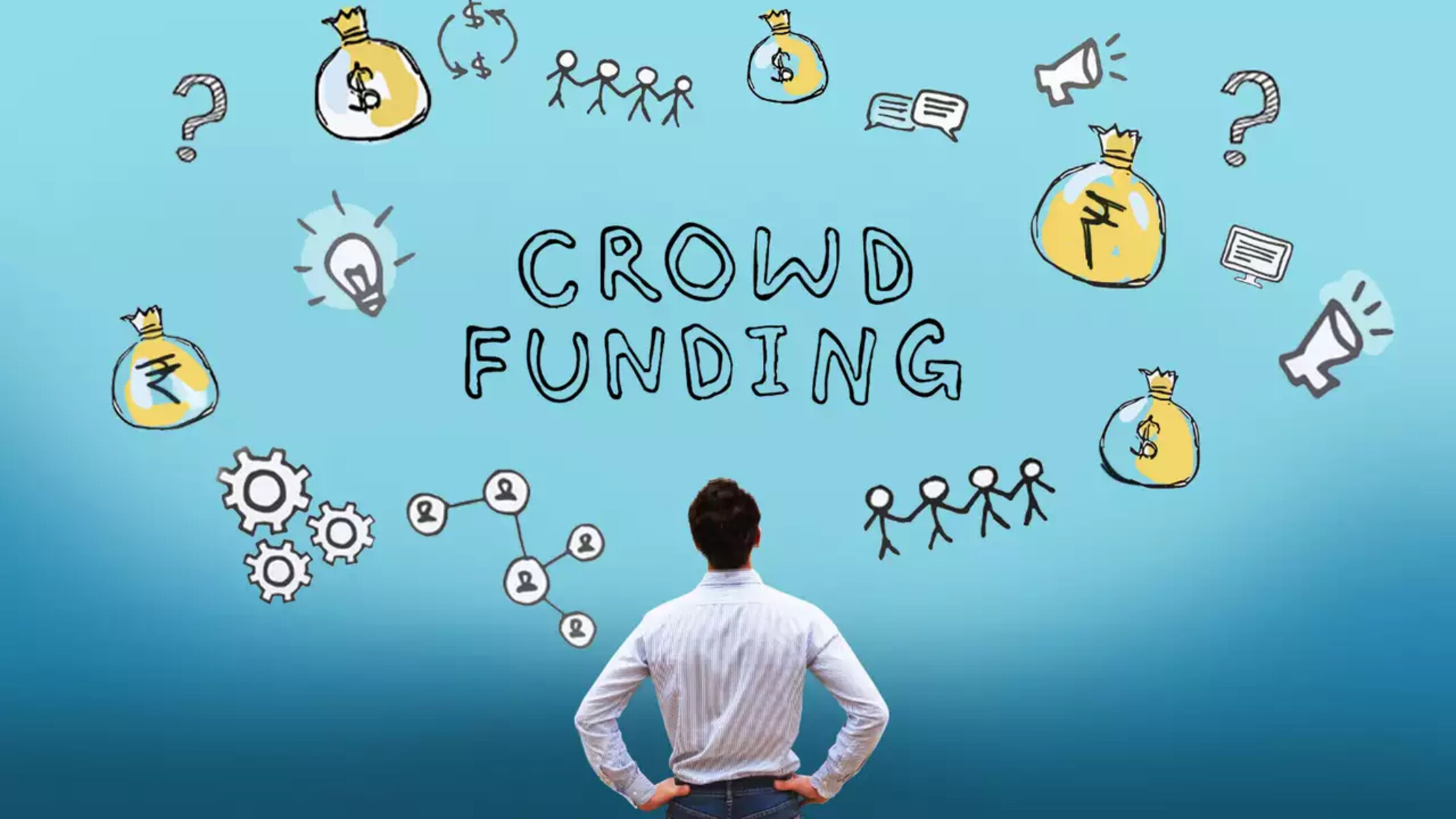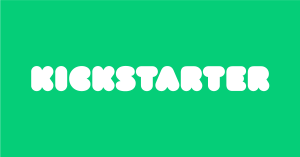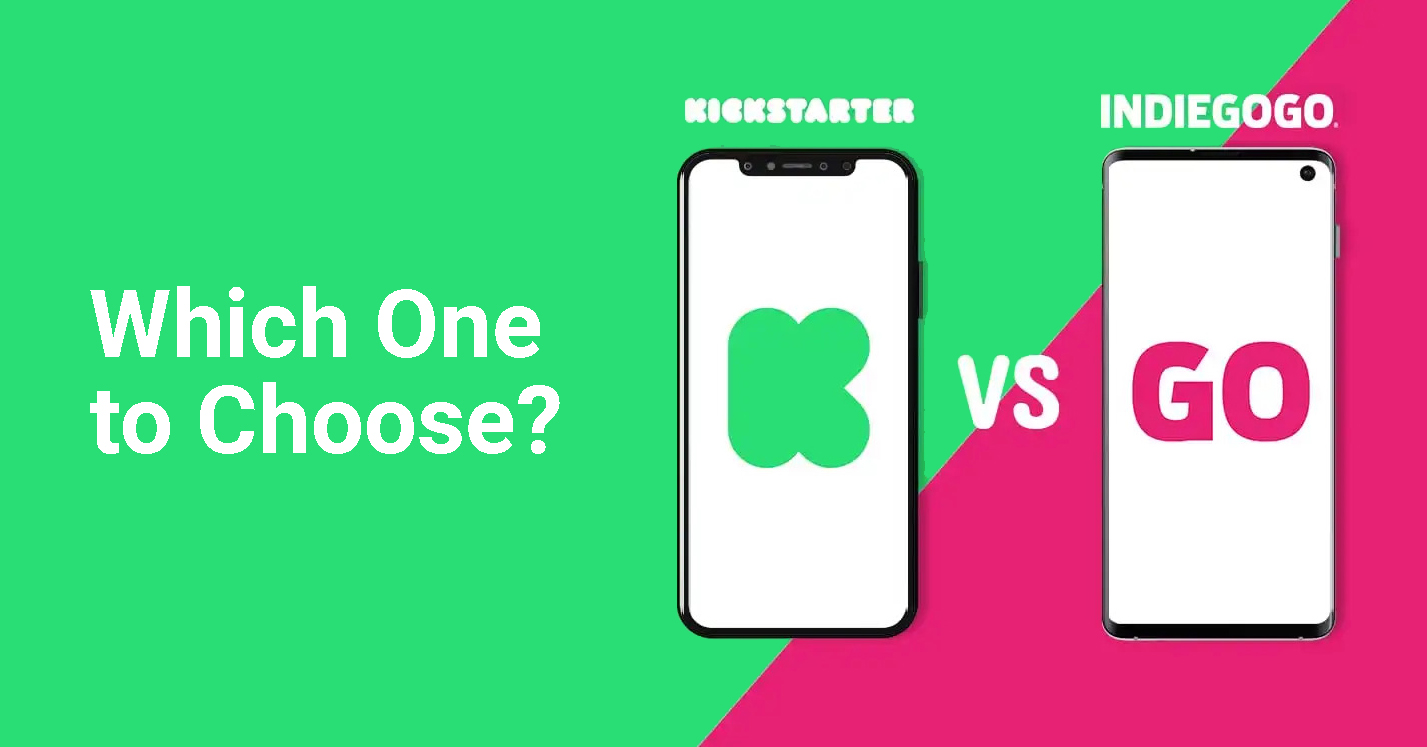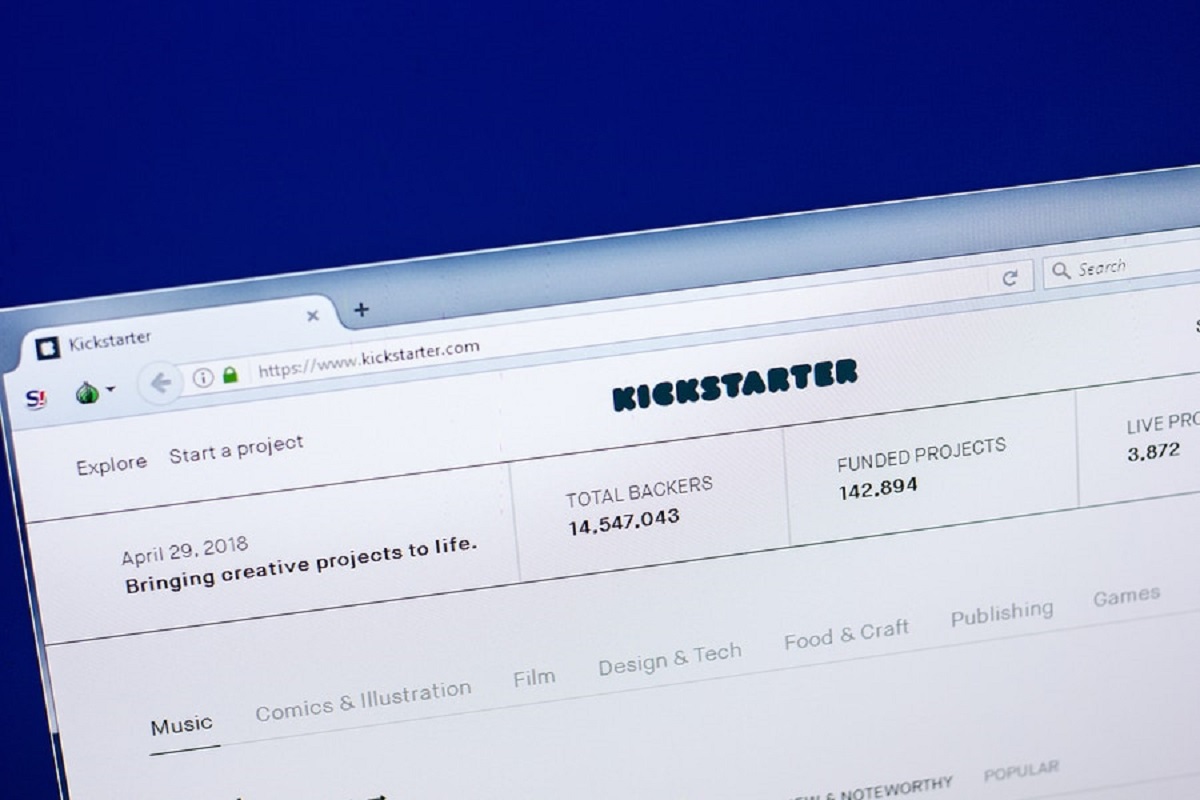Introduction
Crowdfunding has revolutionized the way individuals and businesses raise funds for their projects, ideas, and ventures. Through online platforms, people from around the world can pitch in and contribute money towards a common goal.
Crowdfunding is a concept that allows entrepreneurs, artists, innovators, and individuals with unique ideas to obtain financial support from a large number of individuals, typically through small contributions. This innovative method of fundraising has gained immense popularity in recent years, enabling countless projects to come to life that may have otherwise struggled to secure funding through traditional means.
Unlike traditional fundraising methods, such as seeking loans from banks or pitching to venture capitalists, crowdfunding provides an opportunity for ordinary individuals to be part of the funding process. Supporters contribute to projects they believe in, with the motivation to help bring these ideas to fruition.
The concept of crowdfunding is not a new one. In fact, it can be traced back to early forms of collective funding that existed for various purposes throughout history. However, it was the advent of the internet and the rise of online platforms that truly transformed crowdfunding into the widespread phenomenon we see today.
With the growth of the internet and the ease of accessibility it provides, crowdfunding platforms emerged as a way to connect project creators with potential backers. These platforms serve as intermediaries, facilitating the crowdfunding process and offering a convenient way for individuals to support projects that align with their interests and values.
Over the years, crowdfunding has grown into a multi-billion dollar industry, with platforms like Kickstarter, Indiegogo, and GoFundMe leading the way. These platforms have helped fund a wide range of projects, including creative endeavors such as films, music albums, and art exhibitions, as well as technological innovations, social causes, and charitable initiatives.
In this article, we will delve deeper into the world of crowdfunding, exploring its history, how it works, the advantages and disadvantages it offers, and spotlighting the leading platform in the industry, Kickstarter. Whether you are an entrepreneur seeking funding or a supporter looking to contribute to exciting projects, understanding the ins and outs of crowdfunding is essential for navigating this dynamic landscape.
What is Crowdfunding?
Crowdfunding, as the name suggests, is the practice of funding a project or venture by obtaining small contributions from a large number of individuals, typically through online platforms. It is a collective effort to pool financial resources and support ideas, businesses, or causes that resonate with the community.
At its core, crowdfunding revolves around the principle that many small contributions can add up to a substantial amount, providing the necessary resources to bring a project to life. Rather than relying on a single source of funding, such as a bank or investor, crowdfunding taps into the power of the crowd to collectively back innovative and promising initiatives.
One of the key aspects of crowdfunding is the reward-based system. Project creators offer incentives or rewards to individuals who contribute to their campaigns. These rewards can range from early access to the product or service being developed, exclusive merchandise, personalized experiences, or recognition for their support.
Crowdfunding is not just limited to monetary contributions. In some cases, individuals may also contribute their skills, time, or resources to help a project succeed. This collaborative aspect of crowdfunding fosters a sense of community and engagement among project creators and their supporters.
While crowdfunding has gained popularity in recent years, it is important to note that it is not a guaranteed way to secure funding. Projects must capture the interest and support of the crowd, and creators must effectively communicate their vision and value proposition to attract backers.
Overall, crowdfunding offers a democratized approach to financing, empowering individuals and groups to realize their creative ideas, launch businesses, support charitable causes, or bring social innovations to life. It has opened up new possibilities for funding projects that may have otherwise struggled to secure traditional forms of investment.
History of Crowdfunding
Crowdfunding has deep roots in history, with early forms of collective funding existing for centuries. The concept of pooling resources and soliciting contributions from a group of people dates back to ancient times.
One of the earliest examples of crowdfunding can be traced back to the 18th century when a group of musicians in London raised funds through subscriptions to support their performances. Subscribers would contribute a fixed amount, and in return, they would receive entrance to the concerts.
In more recent history, crowdfunding gained momentum in the late 1990s and early 2000s with the rise of the internet. The internet provided a platform for individuals to connect with a global audience and reach potential backers for their projects. Online platforms emerged as facilitators for crowdfunding campaigns, making it easier for project creators to showcase their ideas and for supporters to contribute.
One of the early success stories of a large-scale crowdfunding campaign was the British rock band Marillion’s initiative in 1997. Facing financial constraints, the band turned to their fans and appealed for contributions to fund a North American tour. Through the power of their loyal fanbase, Marillion successfully raised over $60,000, demonstrating the potential of crowdfunding as a viable means of financing.
It was in the mid-2000s when dedicated crowdfunding platforms began to emerge, further fueling the growth of the practice. Platforms like Indiegogo (founded in 2008) and Kickstarter (founded in 2009) revolutionized the way projects were funded by providing a centralized platform for creators to showcase their ideas and attract backers.
With the evolution of these platforms and the increasing popularity of crowdfunding, various models and types of crowdfunding have emerged. The reward-based model, where backers receive tangible rewards or perks for their contribution, is one of the most common forms. Equity crowdfunding, where backers receive a stake in the business or project they fund, has also gained traction in recent years.
The history of crowdfunding is marked by significant milestones and success stories. Projects ranging from independent films, video games, and innovative technology gadgets to charitable initiatives and social causes have successfully secured funding through crowdfunding campaigns.
As crowdfunding continues to evolve and adapt to changing dynamics, the future holds immense potential for new and exciting projects to be supported by a global community of backers.
How does Crowdfunding work?
Crowdfunding operates on a simple premise – it leverages the power of the crowd to fund projects, ideas, businesses, or causes. The process typically involves the following key steps:
- Project Creation: The first step in crowdfunding is for project creators to define their idea, set a funding goal, and create a compelling campaign. This involves developing a clear and engaging pitch, outlining the project’s purpose, target audience, and the benefits it offers to potential backers. Visuals, videos, and storytelling techniques are often employed to enhance the appeal of the campaign.
- Platform Selection: Once the project is defined, creators must choose a crowdfunding platform that aligns with their goals and target audience. Different platforms offer various features, fee structures, and audience demographics. Popular crowdfunding platforms include Kickstarter, Indiegogo, GoFundMe, and Patreon. The platform serves as the intermediary that connects the project creators with potential backers.
- Creating a Reward Structure: To incentivize backers, project creators usually offer a range of rewards based on the contribution amount. These rewards can vary from early access to the product or service being developed, exclusive merchandise, personalized experiences, or acknowledgments. The reward structure adds an element of value for backers and can significantly influence the success of a crowdfunding campaign.
- Setting the Funding Goal: Project creators need to determine the amount of funding required to bring their idea to fruition. The funding goal should be realistic, taking into account the costs of production, marketing, distribution, and any other expenses associated with the project. It is crucial to strike a balance between setting an achievable goal and ensuring it is sufficient to fully realize the vision.
- Launching the Campaign: Once the campaign is prepared, the project creators launch it on the selected crowdfunding platform. This involves creating a compelling campaign page with a detailed description, visuals, and information about the rewards. The campaign page serves as a central hub for potential backers to learn about the project and make contributions.
- Promotion and Marketing: Effective promotion and marketing are critical to the success of a crowdfunding campaign. Creators need to actively promote their campaign through various channels, such as social media, email newsletters, press releases, and direct outreach to potential backers. Engaging with the community, sharing regular updates, and building momentum are key strategies to gain visibility and attract backers.
- Backer Contributions: Interested individuals, inspired by the project’s pitch and rewards, make monetary contributions through the crowdfunding platform. Contributions can range from a few dollars to significant amounts, depending on the enthusiasm and financial capacity of the backers. The platform tracks the contributions and provides real-time updates on the progress towards the funding goal.
- Achieving or Not Achieving the Goal: Once the campaign duration ends, the project creators assess whether they have achieved or exceeded their funding goal. If the campaign meets or surpasses the funding goal, the project moves forward with accessing and utilizing the funds raised to bring the idea to life. However, if the campaign does not reach the funding goal, most platforms have an all-or-nothing policy, and the funds are not disbursed to the project creators.
- Project Execution and Fulfillment: Successful campaigns transition into the project execution phase. Project creators are responsible for delivering on their promises, fulfilling rewards, and keeping backers informed about the progress of the project. This involves manufacturing products, organizing events, or implementing the project plans as outlined in the initial campaign.
Crowdfunding provides an avenue for individuals and organizations to leverage the collective power of the crowd to fund their creative endeavors, launch businesses, support causes, and bring dreams to reality.
Types of Crowdfunding Platforms
Crowdfunding platforms come in various forms, catering to different types of projects, funding models, and target audiences. Here are the main types of crowdfunding platforms:
- Reward-based platforms: Reward-based crowdfunding platforms, such as Kickstarter and Indiegogo, are the most common form of crowdfunding. Projects on these platforms offer rewards or perks to backers in exchange for their financial contributions. The rewards can range from exclusive merchandise, early access to products, or personalized experiences related to the project.
- Equity-based platforms: Equity crowdfunding platforms enable individuals to invest in early-stage startups or businesses in exchange for equity or a stake in the company. These platforms allow backers to become shareholders and potentially earn a return on their investment if the business succeeds. Equity-based platforms adhere to securities regulations and often involve higher minimum investments compared to reward-based platforms.
- Donation-based platforms: Donation-based crowdfunding platforms, like GoFundMe and Kiva, focus on raising funds for charitable causes, personal emergencies, medical expenses, or community projects. Individuals can contribute without the expectation of receiving any material rewards or financial returns. Donors are motivated by the desire to support a specific cause or help those in need.
- Lending-based platforms: Lending-based crowdfunding, also known as peer-to-peer lending, involves individuals lending money to other individuals or small businesses. Lenders earn interest on their loans over a specified period. Platforms like LendingClub and Prosper facilitate these transactions, allowing borrowers to access loan funds and lenders to earn returns on their investments.
- Real Estate crowdfunding platforms: Real estate crowdfunding platforms pool investments from individuals to fund real estate projects, such as residential or commercial properties, renovations, or property development. Investors can contribute varying amounts and earn returns based on the success of the project. This type of crowdfunding offers an opportunity to diversify investments and participate in the real estate market with relatively lower entry barriers.
- Debt-based platforms: Debt-based crowdfunding platforms enable businesses to raise capital by issuing bonds or debt securities to individual investors. Investors lend money to the business, which is repaid with interest over time. This form of crowdfunding provides an alternative financing option for companies looking to expand or fund specific projects.
Each type of crowdfunding platform caters to different funding models and investor expectations. It’s important for project creators and backers to choose a platform that aligns with their goals, whether it’s earning rewards, supporting charitable causes, investing in startups, or participating in the real estate market.
Advantages of Crowdfunding
Crowdfunding offers numerous benefits for project creators, backers, and the wider community. Here are some of the key advantages of crowdfunding:
- Access to Funding: Crowdfunding provides an accessible avenue for individuals and businesses to raise funds for their projects. It eliminates barriers to traditional funding methods, such as loans or venture capital, which may be difficult to obtain, especially for startups or innovative initiatives. With crowdfunding, creators can tap into a global pool of potential backers and attract contributions from a diverse range of supporters.
- Validation and Market Testing: Launching a crowdfunding campaign allows project creators to validate their ideas and gauge market interest before investing significant time and resources. Positive response and financial backing from the crowd serve as a form of market validation, indicating that there is demand for the product, service, or concept being proposed. This helps creators make informed decisions and refine their projects based on real-time feedback.
- Building a Community: Crowdfunding fosters a sense of community and engagement between project creators and backers. It allows creators to connect directly with their supporters, building a dedicated community of individuals who believe in and support their vision. This community can become a valuable asset beyond the initial funding, providing ongoing support, feedback, and advocacy for future endeavors.
- Marketing and Promotion: A crowdfunding campaign serves as a powerful marketing tool, providing creators with an opportunity to generate buzz and promote their projects to a wide audience. The social nature of crowdfunding encourages backers to share and spread the word about the campaign, amplifying its reach and potentially attracting new supporters. This exposure can have long-term benefits, creating brand awareness and attracting potential customers or investors.
- Control and Independence: Crowdfunding allows creators to maintain control over their projects and retain ownership. Unlike traditional funding methods that may involve relinquishing control or diluting equity, crowdfunding enables creators to stay true to their vision and retain creative freedom. This sense of ownership and independence can be a significant motivator for creators seeking to bring their ideas to life on their own terms.
- Early Adopter Engagement: Crowdfunding backers are often early adopters who are passionate about supporting innovative ideas and being part of the journey from the early stages. Engaging with these early adopters provides creators with a valuable opportunity to gather feedback, iterate on their offerings, and build a base of loyal customers or users even before the project is fully realized.
Overall, crowdfunding presents a range of advantages, empowering creators to access funding, validate ideas, build communities, and gain exposure, while providing backers with the opportunity to support projects they believe in and be part of the creative journey.
Disadvantages of Crowdfunding
While crowdfunding offers numerous advantages, it is important to be aware of its potential drawbacks. Here are some of the key disadvantages associated with crowdfunding:
- No Guarantee of Success: Crowdfunding campaigns can be competitive, and there is no guarantee that a project will reach its funding goal. A campaign’s success depends on various factors, including the quality of the pitch, the level of interest from potential backers, and the effectiveness of the marketing and promotion strategies. Not all projects will receive the necessary support, leading to the risk of failure to secure funding.
- Time and Effort Investment: Running a successful crowdfunding campaign requires a significant investment of time and effort. Creators must develop a compelling pitch, build a campaign page, create engaging content, reach out to potential backers, and provide updates throughout the campaign. Managing a crowdfunding campaign can be demanding, taking away valuable time and focus from actually working on the project itself.
- Competition and Saturation: Crowdfunding platforms are becoming increasingly crowded, with thousands of campaigns vying for attention and support. Standing out from the crowd can be challenging, especially in popular categories such as technology, film, and creative projects. With the sheer number of campaigns, there is a risk of oversaturation, making it difficult for projects to gain visibility and reach their target audience.
- Expectation and Pressure: Backers who contribute to crowdfunding campaigns often have high expectations for the project’s outcome. Meeting these expectations, delivering rewards on time, and ensuring project success can create additional pressure for creators. It is essential to manage expectations effectively and communicate transparently with backers throughout the process.
- Intellectual Property Concerns: When launching a crowdfunding campaign, creators expose their ideas to the public, raising concerns about intellectual property theft or unauthorized replication. While most platforms have policies in place to protect intellectual property rights, creators should still take precautions and consider seeking legal advice to safeguard their ideas and inventions.
- Refunds and Liability: In some cases, projects may face challenges or unforeseen circumstances that prevent them from delivering on their promised rewards or completing the project as planned. While creators have the responsibility to fulfill their obligations, there is no guarantee that all projects will be successful or that backers will receive the expected rewards. Backers should approach crowdfunding with an understanding of the associated risks and exercise due diligence before making contributions.
Despite these disadvantages, crowdfunding remains a valuable tool for many individuals and businesses to secure funding, engage with their audience, and bring innovative projects to life. Careful planning, effective communication, and managing risks appropriately can help mitigate some of the potential downsides of crowdfunding.
Kickstarter: The Leading Crowdfunding Platform
When it comes to crowdfunding platforms, one name stands out as the industry leader – Kickstarter. Founded in 2009, Kickstarter has revolutionized the way creative projects are funded, providing a platform for individuals and groups to bring their innovative ideas to life.
Kickstarter focuses on a reward-based crowdfunding model, where backers contribute funds to projects in exchange for unique rewards or perks offered by the creators. The platform has gained global recognition for its success in funding a diverse range of projects, spanning categories such as art, technology, film, music, design, and more.
One of the main reasons behind Kickstarter’s popularity is its user-friendly interface, which allows creators to easily showcase their projects and connect with potential backers. The platform provides comprehensive tools to craft compelling campaign pages, including multimedia elements, project updates, and a space to convey the project’s story and vision.
Kickstarter has also established a vibrant community of backers who actively engage with projects and provide valuable support. This community-driven aspect adds an element of excitement and camaraderie to the crowdfunding experience, fostering a sense of shared enthusiasm and support for creative endeavors.
Furthermore, Kickstarter has a stringent project selection process, requiring creators to submit project proposals for review before they can launch their campaigns. This ensures that projects on Kickstarter meet certain quality standards and provide transparency to potential backers. It adds a level of credibility and trust to the platform, inspiring confidence among backers that their contributions will be utilized effectively and that they will receive the promised rewards.
Kickstarter’s success stories speak for themselves. Numerous projects that started on the platform have gone on to achieve international acclaim and success. From breakout indie films to revolutionary technology gadgets, Kickstarter has played a pivotal role in bringing these projects to fruition.
It is important to note that Kickstarter operates on an all-or-nothing funding model. This means that project creators must reach their stated funding goals within a specified campaign timeframe in order to receive the funds. This model ensures that projects are fully funded before moving forward, minimizing the risk of partial funding and enabling creators to execute their plans as envisioned.
Through its innovative platform, Kickstarter has enabled countless creators to realize their dreams and launch projects that might have otherwise struggled to secure funding. It has become synonymous with crowdfunding itself, embodying the spirit of creativity, collaboration, and community.
Whether you are a filmmaker, musician, entrepreneur, or artist with a brilliant idea, Kickstarter offers an unparalleled platform to showcase your project, engage with a passionate audience, and secure the necessary funding to bring your vision to life.
How does Kickstarter work?
Kickstarter is a crowdfunding platform that provides creators with a space to showcase their projects and connect with potential backers. Understanding how Kickstarter works is essential for those looking to launch a campaign on the platform:
- Project Creation: Creators start by creating a Kickstarter account and then prepare their project page. This involves crafting a compelling pitch, uploading visuals such as images and videos, and outlining the rewards that backers will receive for their contributions.
- Project Review: Before launching a campaign, creators must submit their project for review by Kickstarter. The review process ensures that projects meet the platform’s guidelines and policies. Kickstarter assesses factors such as the project’s feasibility, authenticity, and adherence to legal requirements.
- Setting a Funding Goal and Campaign Duration: Creators determine the funding goal they aim to achieve during the campaign. It is essential to set a realistic goal that covers the expenses needed to make the project a reality. Creators also choose a campaign duration, typically between 30-60 days, during which they will actively promote their campaign.
- Launching the Campaign: Once the project is approved and the campaign details are finalized, creators launch their Kickstarter campaign. The campaign page becomes the central hub for sharing information about the project, including its description, purpose, rewards, and timeline.
- Promotion and Marketing: Creators are responsible for actively promoting their Kickstarter campaign. They use various channels, such as social media, email newsletters, personal networks, and online communities, to spread the word and generate interest. Regular updates and interactions with potential backers help to maintain momentum throughout the campaign.
- Backer Contributions: Interested individuals browse through Kickstarter’s project catalog and make monetary contributions to the campaigns they wish to support. Backers have the option to choose from various contribution tiers, each offering different rewards based on the amount pledged.
- Reaching the Funding Goal: Kickstarter operates on an all-or-nothing funding model. This means that the project must reach its stated funding goal by the end of the campaign duration in order to receive the funds. If the goal is not reached, no funds are collected from backers, and the project does not proceed.
- Fulfillment and Project Execution: If a Kickstarter campaign successfully reaches its funding goal, the project creator is responsible for executing the project as outlined in the campaign. This involves manufacturing products, delivering rewards to backers, and providing regular updates to keep backers informed about the project’s progress.
- Completion and Fulfilling Rewards: Once the project is complete, creators fulfill the promised rewards and express their gratitude to backers for their support. Fulfillment timelines may vary depending on the nature of the project, production requirements, and the number of backers involved.
Kickstarter provides a platform for creators to access the funding needed to turn their ideas into reality. The platform’s community of backers and its intuitive user interface make it an attractive choice for individuals and groups looking to bring their creative projects to life.
Successful Kickstarter Campaigns
Kickstarter has been the birthplace of numerous successful projects across a wide range of categories. From technological innovations to creative works of art, many campaigns on Kickstarter have surpassed their funding goals and achieved remarkable success. Here are a few notable examples:
- Pebble Time: Pebble Time, a smartwatch with an e-paper display, raised over $20 million in 2015, making it one of the most successful Kickstarter campaigns at the time. Backers were eager to support this innovative wearable technology, and the project ultimately paved the way for the growth of the smartwatch market.
- Exploding Kittens: Exploding Kittens, a strategic card game created by Elan Lee and Matthew Inman, shattered Kickstarter records when it raised over $8 million in just a few weeks. The quirky and humorous card game caught the attention of backers worldwide and became one of the top-funded gaming projects on Kickstarter.
- Oculus Rift: The Oculus Rift virtual reality headset became a groundbreaking success on Kickstarter, raising over $2 million. The project’s success caught the attention of industry giant Facebook, which acquired Oculus VR in 2014. Oculus Rift played a crucial role in popularizing virtual reality in the gaming and entertainment industries.
- Reading Rainbow: The beloved children’s television program, Reading Rainbow, launched a Kickstarter campaign to fund a digital library and classroom version of the popular show. The campaign exceeded its $1 million goal in just a few hours and went on to raise over $5 million. The campaign’s success highlighted the public’s passion for educational resources and the enduring legacy of the show.
- Coolest Cooler: The Coolest Cooler, a portable all-in-one cooler equipped with a blender, Bluetooth speakers, USB charger, and more, became a viral sensation on Kickstarter. The project raised over $13 million, making it one of the highest-funded projects at the time. The Coolest Cooler demonstrated the power of innovative design and the appeal of combining multiple functionalities in a single product.
These successful Kickstarter campaigns represent a fraction of the countless projects that have achieved their funding goals on the platform. The stories behind these projects demonstrate the global reach of Kickstarter and the enthusiastic support of its community of backers.
Tips for a Successful Kickstarter Campaign
Launching a successful Kickstarter campaign requires careful planning, effective execution, and strong engagement with potential backers. Here are some valuable tips to increase your chances of running a successful Kickstarter campaign:
- Set a Realistic Funding Goal: Carefully calculate the amount of funding you need to bring your project to life. Take into account production costs, marketing expenses, and fulfillment requirements. Setting a realistic funding goal increases your chances of reaching it and instills confidence in potential backers.
- Create a Compelling Pitch: Craft a clear and compelling pitch that effectively communicates the unique value of your project. Use compelling visuals, engaging storytelling, and clear explanations to capture the attention of potential backers and convey your passion and expertise.
- Offer Attractive and Varied Rewards: Design a range of rewards that appeal to backers at different contribution levels. Consider offering exclusive early-bird rewards, limited-edition merchandise, or personalized experiences related to your project. Make sure the perceived value of the rewards aligns with the contribution amount.
- Build a Strong Online Presence: Develop a strong online presence and cultivate a community interested in your project even before launching your Kickstarter campaign. Utilize social media platforms, create a dedicated website, and engage with your target audience by sharing updates, behind-the-scenes content, and sneak peeks.
- Invest in High-Quality Visuals: Invest time and resources in creating high-quality visuals for your Kickstarter campaign. High-resolution images, professional videos, and captivating graphics can significantly enhance the appeal and professionalism of your project.
- Plan an Effective Marketing Strategy: Before launching your campaign, establish a comprehensive marketing strategy. Identify target audiences, plan outreach efforts, and leverage your existing networks to generate interest and attract backers. Utilize email newsletters, press releases, influencer partnerships, and social media advertising to expand your reach.
- Provide Regular Updates: Keep backers engaged and informed throughout the campaign by providing regular updates on the project’s progress. Share behind-the-scenes glimpses, milestones achieved, and exciting developments to keep the momentum going and maintain trust and enthusiasm among your supporters.
- Engage with Your Backers: Actively engage with your backers, respond to their comments and inquiries, and make them feel valued and involved in the project. Foster a sense of community by encouraging discussions, soliciting feedback, and creating opportunities for backers to contribute ideas.
- Build a Press Kit: Prepare a press kit containing relevant information about your project, high-resolution images, and key details that journalists and bloggers may find useful. Reach out to media outlets that cover projects similar to yours and offer to provide them with exclusive access or interviews.
- Deliver on Your Promises: After successfully funding your project, fulfill your promises to backers. Be transparent about timelines, communicate any unexpected delays, and ensure that you deliver rewards as promised. Building a reputation for reliability and trustworthiness will enhance your credibility for future endeavors.
By following these tips and tailoring your approach to your project’s specific needs, you can greatly increase your chances of running a successful Kickstarter campaign. Remember that careful planning, effective communication, and genuine engagement with your audience are key factors in achieving your funding goals and creating a loyal community of backers.
Conclusion
Crowdfunding has revolutionized the way individuals, entrepreneurs, and creative minds bring their ideas to life by harnessing the power of the crowd. Through platforms like Kickstarter, artists, innovators, and businesses have the opportunity to secure funding, gain exposure, and connect with a supportive community of backers.
Throughout this article, we explored the concept of crowdfunding, its history, and the advantages and disadvantages it offers. We delved into the workings of Kickstarter, the leading crowdfunding platform that has facilitated the funding of countless successful projects worldwide.
With Kickstarter, creators have an accessible and engaging platform to showcase their projects, attract backers, and turn their dreams into reality. Successful Kickstarter campaigns have shown that crowdfunding can be an effective means of obtaining funding, validating ideas, and building strong communities around creative ventures.
However, running a successful Kickstarter campaign requires careful planning, effective marketing, and open communication with backers. By setting realistic goals, crafting compelling pitches, and engaging with potential supporters through various channels, creators can increase their chances of achieving their funding goals and successfully executing their projects.
Crowdfunding continues to evolve, with new platforms and funding models emerging to cater to various project types and backers’ needs. It presents an exciting opportunity for individuals and businesses to access funding, validate ideas, and cultivate engaged communities that support their creative endeavors.
Whether you are an aspiring artist seeking support for your next exhibition, a tech entrepreneur with an innovative invention, or a passionate advocate for a charitable cause, crowdfunding platforms like Kickstarter offer a bridge between your vision and the support you need to bring it to life.
So, harness the power of crowdfunding, unleash your creativity, and embark on your journey towards a successful and impactful project. Embrace the global community of backers, share your passion, and let the crowd fuel your dreams.










